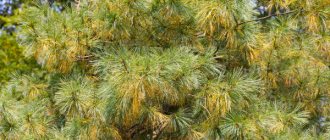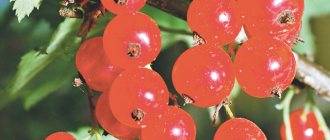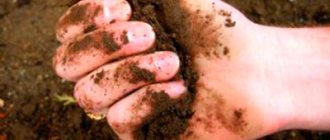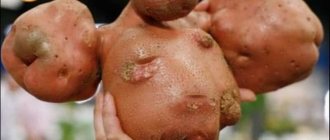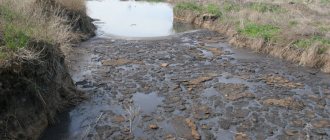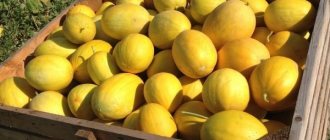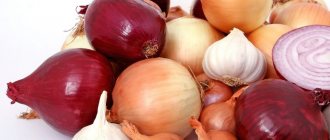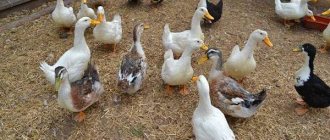More and more new (including exotic) trees and shrubs, fruit and vegetable crops are appearing in summer cottages. The passion for exotic plants does not always please the summer resident, although sellers, when purchasing, assure that the plants are zoned and are able to withstand any climatic adversity. You should not always trust empty words. The zone of its frost resistance will “tell” about the prospects for a plant’s adaptation to its growing area. What it is, and how to apply knowledge about the plant’s frost resistance zone in practice, we will tell you in this article.
What are the frost resistance zones of plants?
USDA zones
USDA zones, or plant hardiness zones, are geographic regions zoned by the average of their annual coldest temperatures. They are a limiting climatic factor for growing ornamental and fruit crops on the site. On the one hand, such a division is quite subjective. On the other hand, a more accurate system for describing the optimal conditions for the natural cultivation of various representatives of the flora does not yet exist.
A system for dividing the planet into winter hardiness zones was developed by the US Department of Agriculture (hence the abbreviation USDA: after the initial letters of this organization - United States Department of Agriculture). Today it is recognized as universal and is actively used in gardening around the world.
What factors were taken into account when dividing into zones:
- minimum temperature (the average value is calculated over several years);
- proximity to the ocean;
- influence of warm or cold currents;
- terrain;
- presence of hot underground springs;
- protection from winds;
- plant biocenoses.
The table clearly demonstrates the temperature regime and approximate geographic regions for each of the 13 zones:
In addition to the table, there is a map of winter hardiness zones, on which each of them has a specific color. In Russia they are distributed by city (by region) as follows:
The winter hardiness zone must be indicated in the passport of each plant that is sold for cultivation. Usually it is included on the label. It should be borne in mind that not all manufacturers adhere to the USDA system. For example, if you buy seedlings in England, they have completely different labeling:
We must not forget that this division is arbitrary and should be used only as a guide. After all, within one zone there may be areas with different microclimates - milder or more severe. And it doesn’t happen every once in a while: one winter will turn out to be brutal, so it won’t fit into the average statistical norms, and the next year it will be abnormally warm.
Taiga climatic zone of Russia
The vast territory can be classified as the second climatic zone. This is almost the entire territory located between the European part in the west and the third climatic zone in the east, stretching along the entire coast. This zone is located from Karelia to Kamchatka. Winter temperatures are moderate. However, the territory located in the east of this zone has more severe winters. Thus, in Eastern Siberia, the harsh winter period with little snow is accompanied by a drop in air temperatures to minus forty or forty-five degrees Celsius. Russia's climatic zone 2 is characterized by very severe weather conditions. Increased dampness promotes the covering of the soil with mosses. The soil is cold and wet. Near bodies of water, the soil temperature is somewhat warmer, but this is not enough for the production of grain crops. Severe freezing of the ground in winter can also be considered a complicating factor.
Frost resistance scale
Winter hardiness zones were actively studied in the Soviet Union. The developments of that time were so thorough that they continue to be widely used by horticultural farms to this day. Therefore, do not be surprised if, when buying a plant at a gardening partnership, nursery or store, you do not find USDA parameters. Most likely, frost resistance scores corresponding to the Russian climate will be indicated instead.
Absolute frost resistance scale by A.I. Kolesnikov:
Methodology of Lapin P.I. and Sidneva S.V. (1973), used in botanical gardens:
Soviet scientists were so deeply involved in this issue that they distinguished between two concepts - winter hardiness and frost resistance of plants. The latter is determined by the ability to withstand the lowest possible temperatures. However, often they are not the cause of the death of crops in winter, but completely different factors. Such, for example, as:
- sudden changes in temperature;
- prolonged thaws, melting of snow in the middle of winter;
- microclimate features;
- dry cold winds;
- lowlands and northern slopes;
- violations in carrying out agrotechnical activities;
- moisture deficit in autumn;
- clay soil;
- long frosts with little snow in the winter;
- return frosts;
- affected by various diseases.
Taking into account all these factors, it is winter hardiness, and not frost resistance, that is determined. Under their influence, the plant may be at risk:
- damping off (as a result of warm winters with heavy snow cover);
- soaking (due to abundant melting of snow or prolonged thaws, when water accumulates on the surface of the soil and is not absorbed into the frozen layer: the plant lacks oxygen and dies);
- death under pressure from the ice crust (when frequent thaws give way to severe frosts);
- bulging and cracking of roots (if the snow has not yet fallen in the fall, but frosts have already struck; if there is a lack of water in the surface layer of soil; during thaws);
- death from drought (in conditions of little snow in winter).
It is quite difficult to take into account absolutely all factors. Therefore, the first task is to find out the frost resistance zone or scores for the plant that is planned to be grown on the site. The second is to find out how it tolerates other unfavorable factors that it may encounter during wintering in a given climatic region. The third is to provide him with protection from them (the same traditional agrotechnical measures: mulching, shelter, etc.).
About frost resistance
| Many gardeners, when choosing seedlings, ask: “Is the variety frost-resistant? How will it be during the winter? Won't he die? Is it zoned for our strip? Is it necessary to cover? “Winter hardiness and frost resistance of plants are different concepts, although close in meaning. Winter hardiness is the ability of plants to withstand a complex of environmental influences during the winter and early spring periods. This includes the ability to withstand spring burns, low temperatures, damping off, soaking, and the ability to withstand frequent temperature changes. Frost resistance is only the ability of a plant to tolerate low temperatures. In the gardens of the Leningrad region, apple trees, pears, plums, cherries, and cherries, including many varieties, grow from fruit trees everywhere. Each variety has a set of technical characteristics (for example, the duration of the season with a certain average daily temperature, which is necessary for the normal occurrence of successive phases of plant development, the duration of the growing season, during which the daily temperature must be above +5 oC and equal to a certain value, and many others ), which can be compared with indicators for a given region and select the appropriate ones. But in addition to the main characteristics, there are many factors that influence these indicators: snow depth, temperature changes, spring frosts, average annual precipitation, groundwater height, humidity, wind rose and others. All of them can form a large number of combinations that affect the main technical indicators. All technical characteristics of the variety are tied to the area in which it was obtained and tested. Sometimes it is tested at several stations, but, as a rule, this is the Central Black Earth zone of Russia. Varieties and their characteristics based on the results of testing (approbation) are approved and included in the State Register. This data is reflected in a special varietal directory, which is used. In our North-Western region, few varieties are tested out of a large number of those available and suitable in terms of initial technical characteristics. Therefore, the same variety will behave differently in different areas, areas, and even within a small area. Some gardeners say that sometimes plants were transplanted several times to different places in their area until they found the optimal place where it became feel good, grow, bloom, bear fruit. |
The climate of our country, characterized by warm or even hot summers but cold and long winters, is naturally not suitable for all flora. A concept called winter hardiness helps assess the ability of plants to withstand cold winters. Some (mosses and lichens) tolerate even the lowest winter temperatures, others (birch, oak) can only grow in more benign conditions, and still others (magnolia, oleander) are not at all suitable for harsh winters. Perhaps every experienced gardener knows which plants are adapted to our climate. But what to do with the new products on the market, how to find out whether the newly acquired green pet will survive the harsh winter? In fact, there is no problem here - in reference books, documents and on the labels of specimens from nurseries, the frost resistance zone suitable for the plant is indicated.
Frost hardiness zones (or winter hardiness zones) are climatic regions of the globe suitable for growing certain types of plants. They are based on a temperature scale indicating the average annual minimum temperature in degrees Celsius or Fahrenheit.
Currently, the most comprehensive scale of frost resistance used everywhere is the so-called USDA scale or zones.
USDA zoning is currently a universal frost resistance scale used by modern farms. However, it has many disadvantages and does not take into account a number of important factors, such as:
Snow depth. It is known that snow perfectly protects the root system of plants from frost, so crops that freeze out in snowless regions can survive well in areas where there is a lot of snow in winter.
Temperature changes. Many crops are afraid not so much of frost as of sudden temperature changes in winter. A sudden thaw, causing the snow to melt, and an equally sudden cold snap leads to the death of the roots. That is why a number of plants, for example some types of bamboo, which can withstand severe frosts, cannot survive in our climate.
[!] In the 60s of the last century, due to such a sudden change in winter temperature (from -1°C to -29°C), the maple collection of the Moscow State University Botanical Garden was severely damaged.
Spring frosts are another factor limiting the cultivation of heat-loving species. In our country, this problem is especially relevant: in the middle zone, frosts can return even at the end of May.
[!] You don’t have to look far for examples. The May cold of 2021 destroyed a significant part of the grapes in Crimea.
Average annual precipitation. Humidity is an important climatic parameter that also affects plant adaptation. For example, some crops tolerate dry, cold air well, but do not survive in humid climates.
Other factors: the difference between day and night temperatures, terrain (presence of hills and lowlands), soil types, daylight hours, wind rose, etc.
The degree of frost resistance of plants changes throughout the year along with the phases of the growing season. For example, in an apple tree, during the phase of intensive growth, the shoots die at a temperature of -3°, and in December they can withstand frosts down to -40°. In winter, the branches of a forest apple tree do not die at a temperature of -30°, and the roots die at -12°.
The flawed USDA system prompted a search for alternatives. And now they use not only the above concept, but also some others. Firstly, USDA zones have been expanded and their number increased significantly. In addition, one of the means of determining frost resistance zones was the use of so-called “indicator plants”. It is known that the range of some species is strictly limited depending on the climate, and therefore the presence of any indicator plant indicates that the territory belongs to a particular frost resistance zone.
In our country, work to determine frost resistance zones began at the beginning of the 20th century, and then continued after the October Revolution. And, although at first the maps were imperfect, and the climatic regions were too generalized, in the 60s the work was continued: the number of zones increased to 42 (to 60 together with subzones). The work was called “Tree-cultivating regions of the USSR.” In addition to zoning, work was also carried out to divide plants found in the USSR into climatic regions. The list consisted mainly of tree crops, but the number of species included in it was very large - about 700. Professor A.I. Kolesnikov, who led the work, summarized the data obtained in the publication “Decorative Dendrology”. This book has still not lost its relevance.
The work did not stop there, and the detailing of zoning continued. Other factors affecting the winter hardiness of plants began to be taken into account: not only the minimum, but also the average annual temperatures of the winter and summer months, average and minimum humidity, evaporation and annual precipitation. The number of frost resistance zones increased to 76, and the plants recommended for each zone were divided into three groups - “main”, “additional” and “auxiliary”: main - plants well acclimatized for the area, additional - crops that can grow in the area under consideration climatic zone only with good care (shelter for the winter), auxiliary - isolated plants. Unfortunately, serious government research on this topic has no longer been carried out, although both the climate and the range of plants have changed, and enormous practical experience has been accumulated. From time to time, individual farms attempt to compile similar maps, but due to lack of resources, their work is limited to certain areas.
With proper care, many crops recommended for more favorable climatic zones can be grown here. To increase the winter hardiness of certain species, it is recommended to: protect the root system from frost. This can be done using coniferous spruce branches (if there is snow), dry fallen leaves, peat, sawdust, and industrial covering material. Polystyrene foam, which has high heat-insulating properties, has also proven itself well. It is necessary to cover not only the roots, but also the above-ground part of the plant. Of course, it is difficult to protect the crown of powerful tree crops (although some gardeners manage to wrap the lower part of the trunks with fabric), but liana-like species and plants with flexible stems should be carefully laid on the ground and covered.
[!] It is especially important to protect young crops, whose age is 2-3 years. Their root system is not yet fully formed and is located close to the surface of the earth.
[!] Winter shelters should be installed only after the onset of the first frosts. At an earlier stage, mice and other rodents can settle in them.
Apply fertilizers and fertilizing in a timely manner. This will increase the stamina, and therefore the plant’s resistance to cold. Mulch the soil. Mulching is necessary not only to protect against frost, but also to preserve moisture in the ground. Pay attention to the structure of the soil and its acidity, and if necessary, enrich the substrate.
Of course, you will have to put in a lot of effort, but the result is worth it: what gardener would not be pleased with a rare exotic on the site. Well, we will expect new research from Russian scientists in this extremely interesting area.
How is it determined?
Determining the frost resistance of plants is a complex research process based on chemistry and biology. In particular, on the release of electrolytes from plant tissues. They begin to be released under the influence of stress factors, including low temperatures. The higher this value, the more points will be given to a culture that cannot easily endure harsh conditions.
The level of carbohydrates is also taken into account. It has been proven that the winter hardiness of plants increases with the accumulation of sugar in the cells. This is explained quite simply:
- the larger the layer of snow, the higher the temperature underneath it →
- this activates the respiration process in plants →
- This is what they spend sugar on →
- since in winter the loss of sugar is not replenished, the plant dies from exhaustion if there is not enough sugar.
There are quite a lot of similar criteria for determining the degree of winter hardiness. To date, a large database of ornamental crops has been developed. Many are distributed by zones. There are even so-called indicators that are a natural part (not specially grown) of one or another natural biological community. They were carefully studied, their botanical features were identified, allowing them to tolerate low temperatures and other negative factors. They are used as a guide when assigning points to other representatives of the flora.
Indicator plants:
Indicators for Russia:
To date, research in this area continues. The list of plants that have already been given winter hardiness scores and divided into zones is growing every year.
How to use the frost resistance table?
For practical use, the climate zoning scale for USDA zones in the form of a table or map is convenient. It was updated in 2012 due to climate change over the past 30 years. The territory of Russia occupies zones from zero to 9. There are 13 USDA zones in the world - from 0 to 12. Moreover, for more accurate information, each USDA zone has two subzones a and b , whose maximum temperatures differ within 2-3 °C.
Eg:
- Zone 1 - Central Siberia;
- Zone 2 - Southern Siberia;
- Zone 3 - Ural, Eastern Siberia;
- Zone 4 - Moscow region and most of Central Russia;
- Zone 5 - Moscow, St. Petersburg and the region, Vladivostok, Central Russia, the Baltic states, Minsk and most of Belarus, Kiev and central Ukraine;
- Zone 6 - Caucasus, Krasnodar region, Crimea, western and southern regions of Ukraine, eastern and central Poland, Czech Republic;
- Zone 7 - Southern coast of Crimea;
- Zone 8 - Dagestan;
- Zone 9 - Sochi.
Map of frost resistance zones of the European part of Russia Map of frost resistance zones of Europe The winter hardiness
of plants is influenced, in addition to weather, by many other factors. Under natural conditions, plants cannot grow strictly in a specific area. For example, forest and other crops in the Novosibirsk region grow with equal success in the 2nd and 3rd zones. For Moscow and St. Petersburg, you can select plants that will grow successfully from zones 1 to 4, although zone 5 is the main one for them. Only in colder conditions will they have to be covered for the winter, mulched, wrapped, and covered with caps.
The above examples once again demonstrate that zoning based on temperature characteristics is approximate and takes into account the minimum winter temperatures that the plant can withstand. When choosing which plant to buy, you need to take into account not only temperature data, but also the local climate (amount of snow, duration of frost, wind strength, return frosts, etc.). Certain plant species can spread within 5-6 zones with a milder climate.
When purchasing plants from a nursery, be sure to check that the tag indicates the USDA zone in addition to zoning. What category (group) does culture belong to (main, additional or auxiliary)?
Our article “The best varieties of fruit crops for cold regions” will help you decide on the choice of fruit crops.
As for exotic plants, even with the same temperature zone of growth, be prepared for their acclimatization in new conditions, which means shelter, protection from diseases and pests, and other additional work.
Increasing winter hardiness
What to do if the plant you like is not recommended for your zone? There are certain ways to increase winter hardiness that you can try. Please note that they do not guarantee the success of the event. If you live in zone 2b, but want to grow a crop from zone 8a on your plot, this is impossible. The difference should be no more than 2-3 points.
How to increase winter hardiness:
- Protect the root system with mulching: use spruce branches, dry leaves, peat, sawdust, polystyrene foam, and industrial covering material for this purpose.
- Before wintering, apply potassium phosphate fertilizers to increase endurance and resistance to low temperatures.
- Autumn whitewashing protects the bark from cracks.
- Good autumn watering will improve the tone of the plant.
- Improve the soil structure by liming acidic substrates, adding sand and compost.
- Improve water permeability and aeration of the soil so that the roots do not protrude.
- Make sanitary and formative pruning so that the plant does not waste sap on unnecessary branches in winter.
- Organize snow barriers.
- Treat with fungicides and insecticides to prevent diseases.
In addition, the correct selection of plants, taking into account the selection of species and varieties characterized by increased winter hardiness, will reduce the risk of death of ornamental crops on the site.
Important note! When studying winter hardiness zones on your own, based on publications on the Internet, you should be as vigilant as possible. Today, there are a large number of systems for distributing this parameter according to climatic zones, points, etc. This has given rise to many discrepancies, starting with temperature regimes and ending with geographic regions. Take information only from verified, authoritative resources. For example, from the official website of the US National Arboretum, USNA, the Council of Botanical Gardens of Russia, Belarus and Kazakhstan. It’s even better to consult with dendrologists, breeders, landscape designers and other relevant specialists.
Representatives of winter-hardy plants
Prominent representatives of cold-resistant plants are barley, flax, vetch and oats.
Barley
Linen
Vika
Oats
Frost-resistant species include perennial organisms of root, tuberous, and bulbous types, as well as annuals of spring and bushy ones of winter.
Note that during the cold season, it is the roots of the plant that are most susceptible to freezing. If negative temperatures prevail in the region, then without a thick layer of snow the likelihood that they will survive is quite low. In such areas, it is necessary to create an insulating layer by mulching the soil around the plant.
It is at the beginning of winter (December, January) that plants have maximum winter hardiness. But with the onset of spring, even minor frosts can have a detrimental effect on a representative of the flora.

